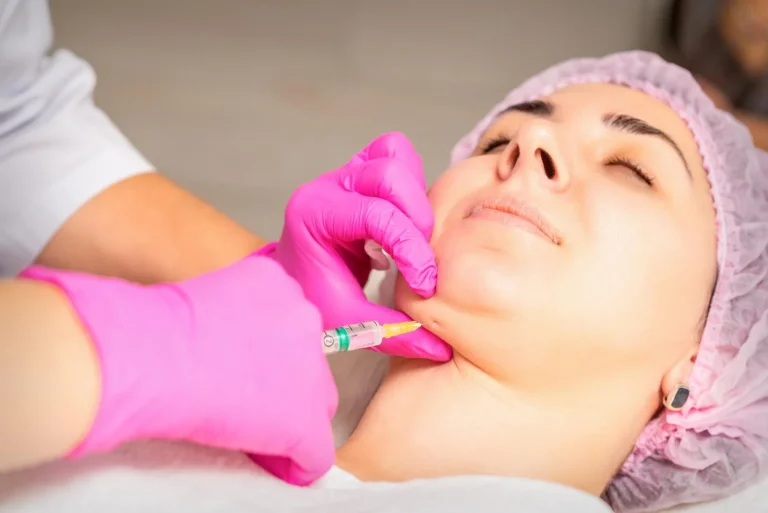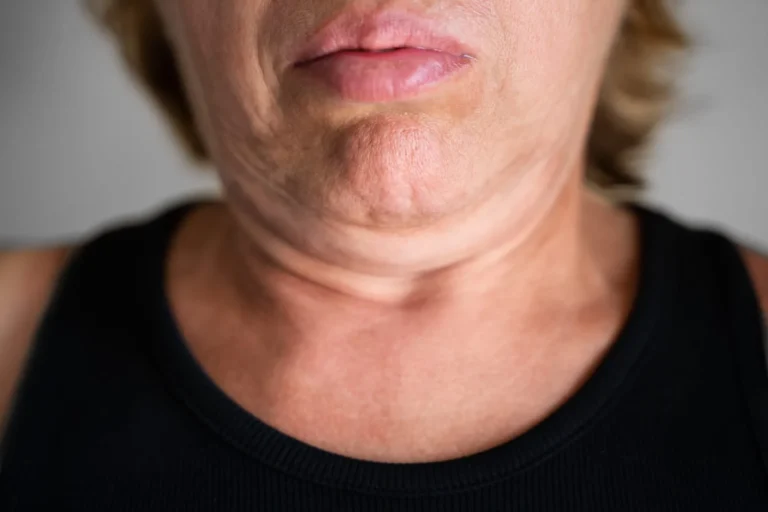If you’re considering double chin surgery as a way to improve your appearance and enhance your profile, you likely have many questions. Double chins can be a result of genetics, aging, or weight fluctuations, and many people turn to surgery to eliminate this common concern.
This article will walk you through everything you need to know before undergoing double chin removal surgery, from the types of procedures available to the recovery process, including costs and what to expect during the procedure.
"Beauty is the illumination of your soul."
John O’Donohue
What is Double Chin Surgery?
Double chin surgery is a cosmetic procedure designed to remove excess fat and skin from the chin and neck area to create a smoother, more contoured jawline. Many individuals develop a double chin due to a combination of factors, such as genetic predisposition, aging, and fluctuations in weight. This excess fat can be difficult to target through diet and exercise alone, making surgery an appealing option for those looking for a more defined neck and chin area.
For many people, double chin removal surgery can dramatically improve their appearance, giving them a more youthful and sculpted profile. If you are considering this procedure, it’s important to understand the different types of surgery, what to expect before and after, and the potential risks and benefits involved.
Types of Surgeries for Double Chin
There are several types of surgeries for double chin removal, each with varying techniques, depending on your needs and the amount of fat or skin in the area. Below are the most common surgical and non-surgical options available for eliminating a double chin.
Liposuction for Double Chin Removal
Liposuction is one of the most common and effective methods for double chin removal surgery. In this procedure, a small incision is made under the chin or in the natural skin folds around the jawline.
Through this incision, a small tube (cannula) is inserted to break up and remove excess fat from the area. Liposuction offers precise results, with minimal scarring and a faster recovery time compared to more invasive procedures.
This surgery is ideal for individuals who have a double chin caused by excess fat, but with good skin elasticity. It’s a relatively simple procedure with great results when done by an experienced surgeon.
Non-Surgical Options
For those who are looking for a less invasive approach, non-surgical options are available. While these treatments cannot achieve the same dramatic results as surgery, they can be effective for those with a mild double chin.
- Kybella: This FDA-approved injectable treatment uses deoxycholic acid to break down fat cells under the chin. Several treatments are usually required to achieve noticeable results, and the procedure is minimally invasive with little downtime.
- CoolSculpting: This is a non-invasive procedure that freezes fat cells in the double chin area, causing them to break down and gradually be absorbed by the body over time. The results take a few months to appear, but can provide a subtle reduction in fat.
These non-surgical treatments are effective for individuals who have a smaller amount of fat and prefer to avoid the risks and downtime associated with surgery.
Neck Lift or Facelift Combined with Double Chin Surgery
In some cases, individuals with a significant amount of excess skin or sagging skin may benefit from a neck lift or facelift combined with double chin surgery. This procedure involves lifting the skin and tightening underlying tissues to create a smoother, firmer jawline and neck. This combined approach is ideal for those who have more advanced signs of aging or significant sagging in the chin and neck areas.
Preparing for Double Chin Surgery
Consultation with Your Surgeon
The first step in preparing for double chin surgery is a consultation with a qualified, experienced surgeon. During this appointment, the surgeon will assess the amount of excess fat and skin in the chin and neck area.
They will also evaluate your overall health, medical history, and expectations to determine whether you’re a good candidate for the procedure. This consultation is also a time for you to ask any questions about the surgery, the recovery process, and the expected outcomes.
Pre-Operative Instructions
Before the surgery, your surgeon will provide you with detailed pre-operative instructions. These instructions may include guidelines for:
- Avoid certain medications that can increase bleeding, such as aspirin or blood thinners.
- Quitting smoking for at least a few weeks before and after surgery promotes better healing.
- Fasting for several hours before the procedure if general anesthesia is required.
Following these instructions closely will help ensure the surgery goes smoothly and minimize any risks during the procedure.
Understanding the Risks and Benefits
Like all surgeries, double chin surgery comes with both risks and benefits. Understanding these is an important part of the decision-making process. The benefits include improved facial appearance, a more defined jawline, and enhanced self-confidence. However, potential risks may include infection, scarring, nerve damage, or asymmetry.
Your surgeon will discuss these risks with you in detail and ensure you are fully informed before moving forward.

Double Chin Surgery Procedure: What to Expect
Step-by-Step Overview of the Surgery
The procedure will vary based on the technique used. Here is a general overview of the steps involved:
- Anesthesia: The procedure begins with either local anesthesia (for smaller procedures) or general anesthesia (for more extensive surgery). This ensures that you remain comfortable and pain-free during the procedure.
- Incision: For liposuction, a small incision is made under the chin or in the natural folds of the skin. If you’re undergoing a neck lift or facelift, the incisions may be made around the ear or under the chin.
- Fat Removal or Skin Lifting: Depending on the technique, fat will be removed using liposuction, or the skin will be lifted and tightened. The surgeon will sculpt the area to create a smoother, more defined jawline and neck.
- Closing the Incisions: After the fat is removed and/or skin tightened, the surgeon will close the incisions with sutures. These sutures are typically hidden in natural skin folds to minimize visible scarring.
Pain Management During and After Surgery
Pain management during the surgery is taken care of with anesthesia, so you won’t feel discomfort during the procedure. After the surgery, you may experience some pain, swelling, and bruising. The surgeon will prescribe pain medication to help manage any discomfort, and cold compresses can be used to reduce swelling.
Duration and Recovery Time
The length of the surgery depends on the technique used. Liposuction typically takes around 1-2 hours, while more complex procedures, like a neck lift or facelift, may take several hours. You may need to stay in the clinic for a few hours after the surgery to recover from anesthesia.
Most people can return to work and normal activities after 1-2 weeks, although strenuous exercise and heavy lifting should be avoided for at least 4-6 weeks.
Recovery After Double Chin Surgery
Immediate Post-Operative Care
Immediately after surgery, you will need to wear a compression garment or bandage around your chin and neck area. This helps reduce swelling and supports the healing process. Your surgeon will provide specific care instructions for keeping the incision sites clean and managing swelling.
It’s important to follow these instructions closely to avoid complications and promote faster healing.
Long-Term Recovery and Healing
As the initial swelling and bruising subside over the next few weeks, you will begin to notice a more defined chin and jawline. Full recovery can take several months, as the skin adjusts to its new position and settles into its final shape. You will have follow-up appointments with your surgeon to ensure the healing process is progressing as expected.
Scar Management and Skin Care
Scarring is inevitable with any surgical procedure, but a skilled surgeon will minimize visible scars by placing incisions in natural skin folds. Over time, the scars will fade, but they may remain visible for several months. Your surgeon may recommend topical treatments or silicone sheets to improve the appearance of scars and promote faster healing.

Is Double Chin Surgery Right for You?
Ideal Candidates
The ideal candidates for the surgery are individuals who are in good overall health and have a moderate amount of excess fat or skin in the chin and neck area. It’s also important to have realistic expectations about the results of the procedure.
Who Should Avoid Double Chin Surgery
Not everyone is a suitable candidate for double chin surgery. Those with serious health conditions, such as uncontrolled diabetes or heart disease, may not be eligible for surgery. Additionally, individuals with a significant amount of excess skin or underlying health issues may need to explore alternative treatments or approaches.
What Are the Alternatives to Double Chin Surgery?
If you’re not ready for surgery or if you’re looking for a less invasive solution, there are non-surgical options available, including:
- Kybella: A non-surgical injectable treatment that destroys fat cells under the chin.
- CoolSculpting: A fat-freezing procedure that reduces fat without surgery.
- Liposuction: A minimally invasive procedure to remove fat from the chin area.
Consulting with a qualified surgeon will help you determine the best approach based on your individual goals and needs.
Finding the Right Surgeon
When considering double chin surgery removal, it’s important to choose a qualified, experienced surgeon who can provide you with a personalized treatment plan. Be sure to ask questions about the procedure, recovery, and expected results during your consultation. Researching potential surgeons and reviewing their patient feedback can help ensure that you’re making the best decision for your aesthetic goals.
By understanding the process, having realistic expectations, and following your surgeon’s aftercare instructions, you can achieve a more defined and youthful-looking chin that enhances your overall appearance.

